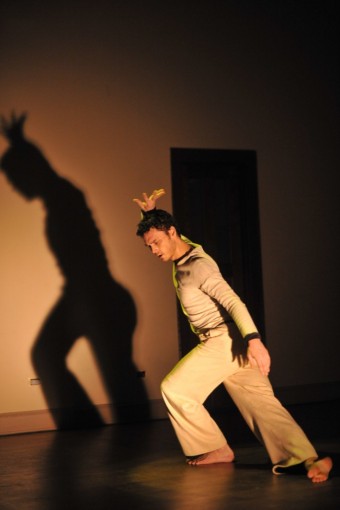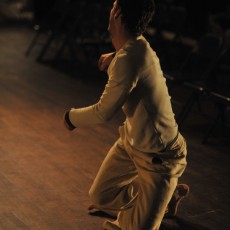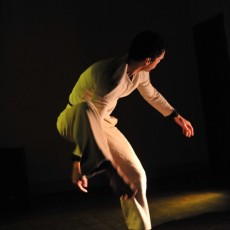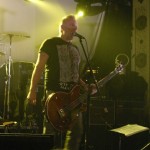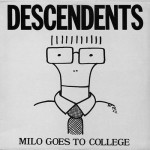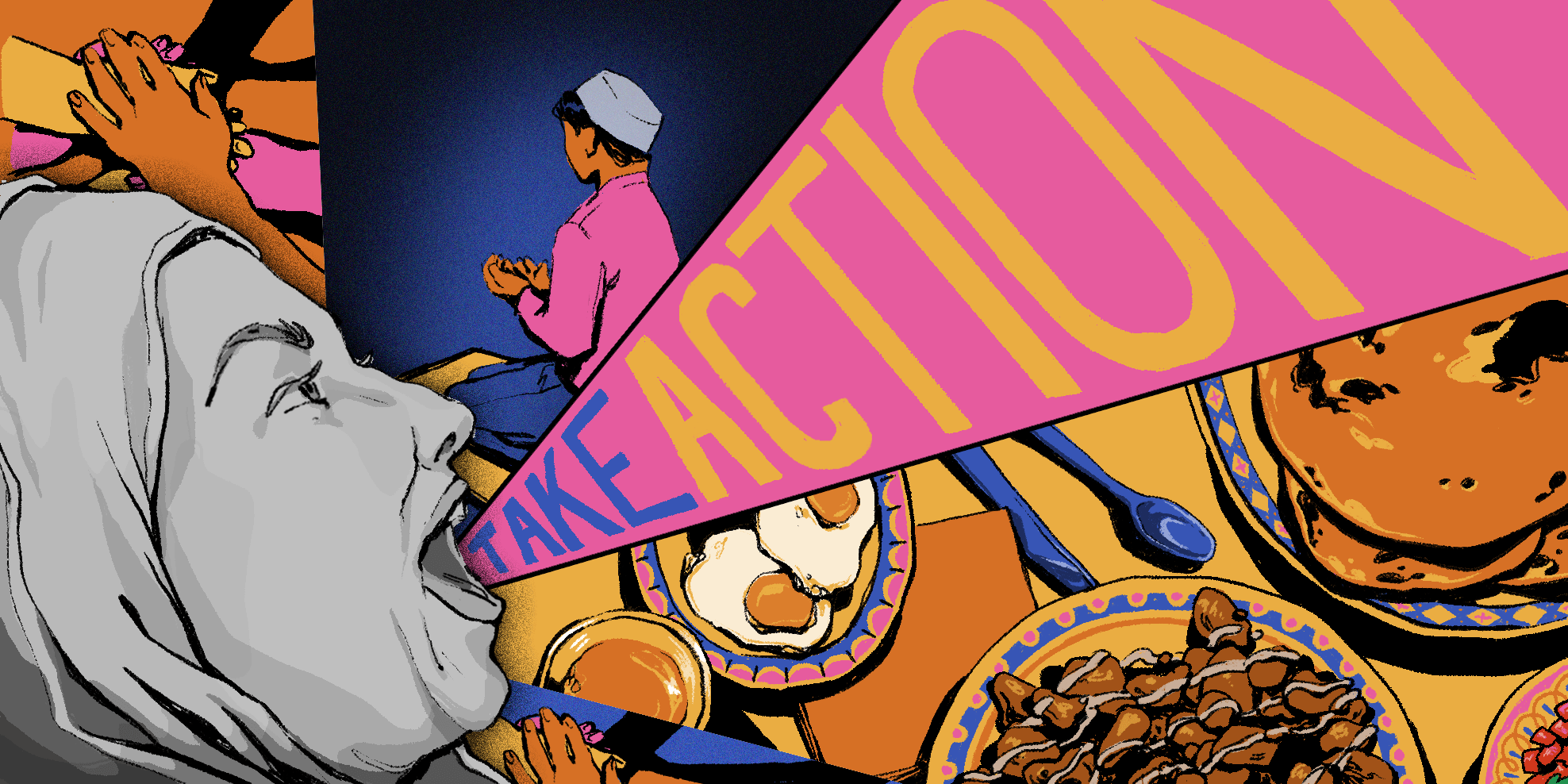Jonathan Meyer, Artistic Director of contemporary dance company Khecari, held several performances at the Lacuna Artist Loft Studios September 9–11 and 16–18, which featured the choreographer/performance artist’s third installment of the sound-movement series “Home.” This installment, titled “Whence,” was a collaboration between Meyer and composer Christopher Preissing, fusing elements of dance, performance and sound art to create a truly unique experience for the viewer.
Taking place in an empty 16,000 square-foot warehouse, illuminated only in the areas in which Meyer performs, the piece takes the viewer on a journey through different stages and areas of the space, forcing them to discover it one piece at a time, with Meyer acting as the guiding light. The performance follows Meyer through different stages as he portrays his physical endurance and remains almost completely silent in order to project and create, within the audience, feelings of simultaneous love and anxiety associated with art and the creative process.
“Whence” begins with Meyer as he declares to the audience on queue cards that he will not be speaking to them throughout the performance. It follows him as he moves into and out of different lit areas of the warehouse. The audience is led by vocalists, who appear either from within the crowd or out of the surrounding darkness, to the next area of performance, where they are also instructed on how far or near to stand from Meyer’s space. The audience follows Meyer as he moves from one space to the next, each one offering a new stage of the performer’s act. The audience’s proximity to Meyer fluctuates as they follow him through the space and watch his vulnerability, strength, spontaneity and exhaustion. The artist strips naked, immerses himself in a small tub of water, cleans himself aggressively, distorts his body to fit into cramped spaces, gets dressed, changes clothes and improvises an extended period of intense dance — the viewer is required to consider the limits of the body and the feelings associated with such displays of the self.
Accompanied by the sounds of four vocalists and a handful of audience members equipped with various instruments, “Whence” relies heavily on the aural, as well as the visual, in order to create a sense of disorientation and unease within the viewer. The vocalists recited fragmented and abrupt moments of unintelligible speech, while steel bundt pans were struck with marimba mallets — the sounds were queued and projected from the speakers set up throughout the space by Preissing. Due to the intimate nature of the events and interactive element of following the performer as he changes and experiences different actions, the viewer acquires not only a sense of disorientation and anxiety, but also a feeling of calm that usually follows meditation: the feeling of ambivalence.
Inspired by his own journal entries from over ten years ago, in which he had expressed an inability to “be[come] engaged in dance,” and the contemplation of “what it would take to return to the dance world,” Meyer sought to create an event that would reinvestigate these feelings and project them onto his audience, as well as explore the complicated relationship between artist and art.
“There was a lot in the journal about the relationship between love of an art form and the combination of egotism and insecurity, which may drive one to engage in art. In this project, I was interested in confronting the audience with such issues — both to create a certain level of discomfort for the audience, and also to reveal my own awkwardness and uncertainty to them. At the same time, I want to reward the audience. The more of a challenge I offer, the more important I feel such reward to be.”
Through the juxtaposition of mysterious darkness, the physical feeling of the unknown and the intimate relationship established between the viewer and performer, Meyer was able to explore the emotional dichotomy most artists experience in relation to their craft. “Whence” not only illustrated the difficulties of being an artist and combating contradictory feelings as such, but also gave the viewer the chance to experience them by creating a specific and unique environment in which to embellish them.

